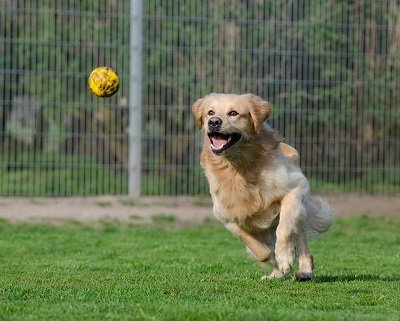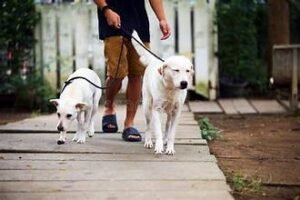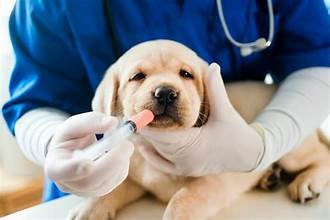Labrador Retrievers
Your Complete Guide to the World’s Most Loved Dog
Discover everything about Labradors – training, care, diet & more.
Quick Facts About Labrador Retrievers
Lifespan
10–12 years
Weight
25–36 kg
Colors
Black, Yellow, Chocolate
Temperament
Friendly, Energetic, Smart
Best For
Families, Active Owners
What Makes Labrador Retrievers So Special?
The Labrador dog breed is loved for its friendly nature, intelligence, and loyalty. Originally from Newfoundland, Labradors were bred to assist fishermen and later became popular hunting companions in England.
Labrador Characteristics
Labradors have a strong, athletic build, short dense coat, and an iconic otter-like tail. They come in yellow, black, and chocolate colors. This breed is energetic, obedient, and easy to train.
Labrador Retriever Personality
Known for their loving and social nature, Labrador retrievers are great with families, kids, and other pets. Their calm and dependable personality makes them ideal as therapy and service dogs.

Training Tips for Labrador Puppies
Labrador puppies are intelligent and eager to learn, making training easier if started early. Consistency, patience, and positive reinforcement are key.
Basic Commands
Teach essential commands like sit, stay, come, and leave it. Labradors respond well to treats and cheerful voice tones. Short, regular sessions work best.
Leash Training
Begin leash training indoors before heading outside. Use a harness or flat collar, and reward calm walking. This prevents pulling and builds control during walks.
Dealing with High Energy
Labradors are full of energy! Daily exercise, playtime, and mental stimulation (like puzzle toys) help keep your Labrador’s behavior balanced and prevent boredom-related issues.

Common Foods Labradors Can Eat
High-quality dry kibble (meat-based)
Cooked chicken, turkey, and salmon
Brown rice, sweet potatoes
Carrots, peas, pumpkin (in moderation)
Fresh water always available
| Age | Meals per Day | Portion Size |
|---|---|---|
| 2–3 months | 4 meals | ½ – 1 cup per meal |
| 4–6 months | 3 meals | 1 – 1.5 cups |
| 6–12 months | 2–3 meals | 1.5 – 2.5 cups |
| 1 year+ (adult) | 2 meals | 2.5 – 3 cups total |
Always consult your vet for precise portion adjustments based on weight and activity level.
Recommended Dog Food Brands
Here are some trusted options that provide balanced nutrition for Labradors:
Royal Canin Labrador Retriever Formula
Hill’s Science Diet Large Breed
Purina Pro Plan Sport
Orijen Original Dog Food
Wellness CORE Grain-Free
Look for formulas with real meat, no fillers, and joint-supporting ingredients like glucosamine and omega-3s.
Keeping Your Labrador Active & Happy
Labrador Retrievers are high-energy dogs that need regular physical activity to stay healthy and well-behaved. Without enough exercise, they can become bored and destructive. Here are some fun ways to keep your Labrador active and happy:
Swimming
Labradors love water! Their strong legs and water-resistant coats make them natural swimmers. Swimming is a low-impact, full-body workout that helps burn off energy and is great for joint health.


Fetch Games
Fetch is not only fun but also mentally stimulating for your Labrador. Use safe toys or tennis balls in open areas like a backyard or dog park. It’s a great way to improve obedience and burn calories.
Walking Routines
Daily walks are essential for your Labrador’s lifestyle. Aim for at least 30–60 minutes of walking per day. Consistent walking routines improve behavior, reduce anxiety, and strengthen your bond.

Grooming & Health Tips for Your Labrador Retriever
Proper grooming and regular health care are key to keeping your Labrador retriever healthy and happy. Here’s what every Labrador owner should know about grooming, shedding, and vet care.
Grooming Schedule
Labradors have a short, double-layered coat that needs regular maintenance. Brush your Labrador dog at least 2–3 times a week to remove dirt and loose fur. Bathe once every 6–8 weeks using a gentle, dog-safe shampoo.

Shedding Control

Labradors shed year-round, especially during seasonal changes. To manage shedding:
Use a deshedding brush regularly
Vacuum fur-prone areas frequently
Feed a balanced diet with omega-3 for skin & coat health
Vet Visits & Routine Checkups
Schedule routine vet visits every 6–12 months. Regular checkups help detect issues early and ensure your Labrador’s health stays on track. Don’t forget flea/tick prevention and dental hygiene.


Vet Visits & Routine Checkups
Keep your Labrador retriever’s vaccinations up to date with this easy-to-follow checklist. It includes core vaccines like:
DHPP (Distemper, Hepatitis, Parvovirus, Parainfluenza)
Rabies
Bordetella (Kennel Cough)
Leptospirosis
Lyme disease
Common Questions About Labrador Retrievers
Yes, Labrador Retrievers are excellent family dogs and are known for being gentle, friendly, and patient with children. Their playful nature and loyalty make them ideal companions for families with kids.
Labradors need 1–2 hours of exercise daily. This can include walks, swimming, fetch games, or other high-energy activities. Regular exercise helps manage their weight and supports their mental and physical health.
Labradors are not excessive barkers, but they may bark to alert or when excited. Proper training and socialization can reduce unnecessary barking.
Some common Labrador health problems include hip dysplasia, obesity, ear infections, and progressive retinal atrophy. Regular vet visits, proper diet, and exercise can prevent many of these issues.